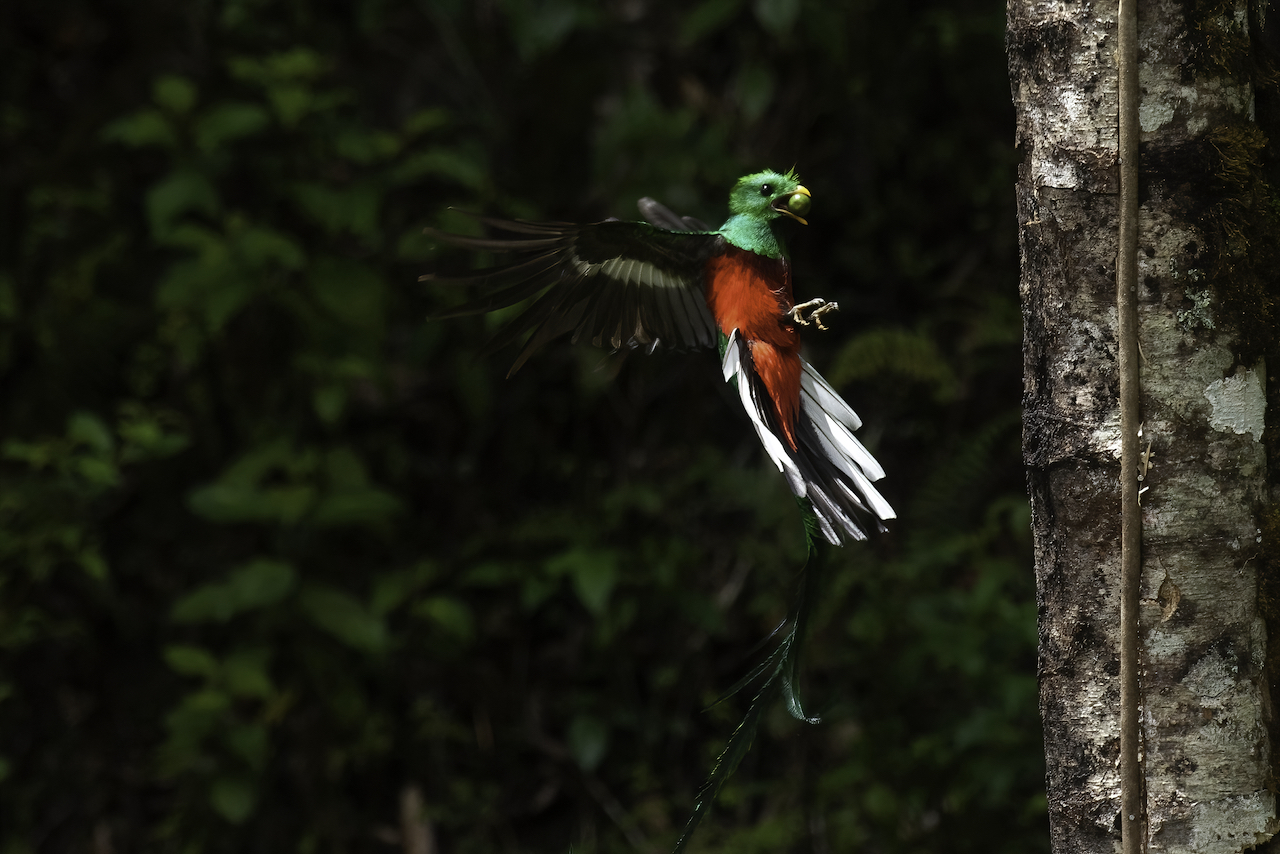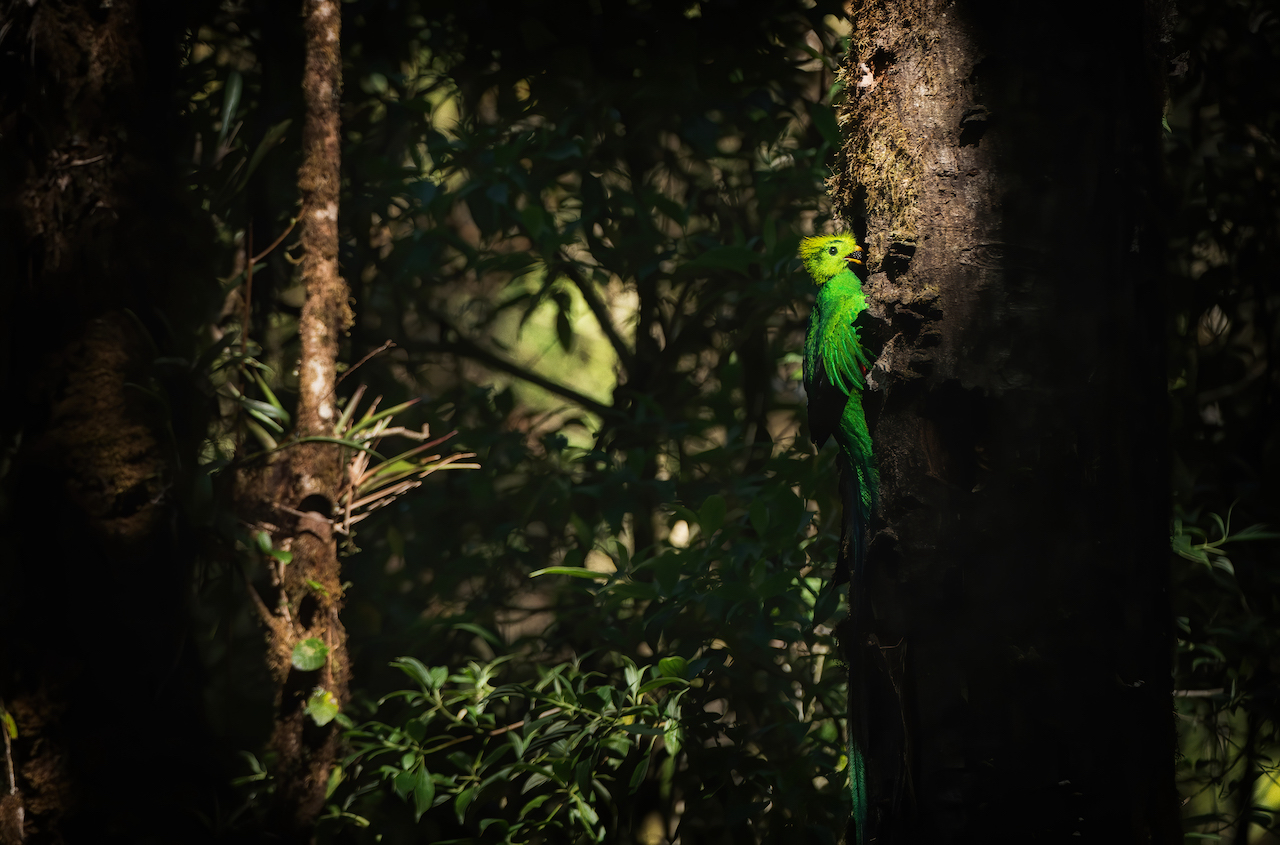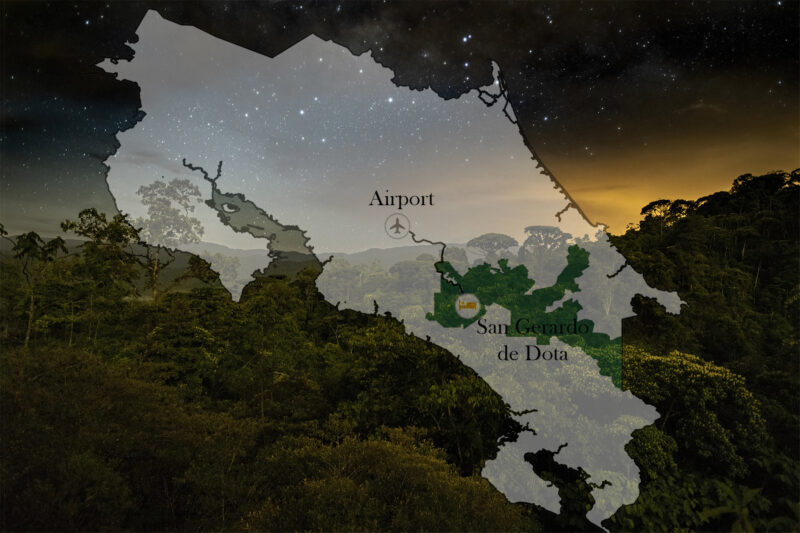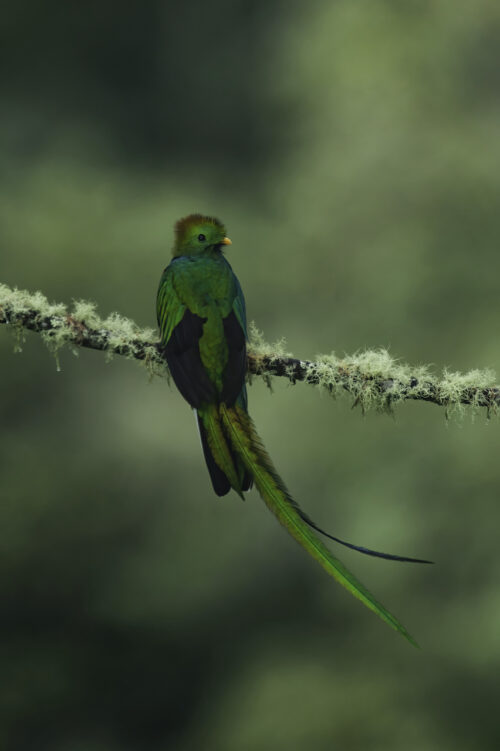All about the Resplendent Quetzal Life.
KINGDOM: Animalia
PHYLUM: Chordata
CLASS: Birds
ORDER: Trogoniformes
FAMILY: Trogonidae
GENUS: Pharomachrus
SPECIES: Pharomachrus mocinno

With a life span of 3 to 10 years, the resplendent quetzal (Pharomachrus mocinno) is a small bird found in southern Mexico and Central America. These animals live in the tropical forest, particularly montane cloud forests and they are part of the Trogonidae family. Like other quetzals, the resplendent is omnivorous, its diet mainly consists of fruits of the Lauraceae family, but occasionally also preys on insects, lizards, frogs, and snails.
The species is well known for its colorful and complex plumage that differs substantially between sexes. Males have iridescent green plumes, a red lower breast and belly, black inner wings, and a white under-tail, while females are duller and have shorter tails. Grey lower breasts, bellies, and bills, along with bronze-green heads are characteristic of females. These birds hollow holes in decaying trees or use ones already made by woodpeckers as a nest site. They take turns while incubating, males throughout the day and females at night. The female usually lays one to three eggs, which hatch in 17 to 19 days. The quetzal is an altitudinal migrant, migrating from the slopes to the canopy of the forest. This occurs during the breeding season, which varies depending on the location, but usually commences in March and goes as far as August.
Appearance.
Resplendent quetzals are beautiful birds well known for their colorful plumage. They have a green body (showing iridescence from green-gold to blue-violet) and red breasts. Depending on the light, quetzal feathers can shine in a variety of colors: green, cobalt, lime, yellow, to ultramarine. Their green upper tail coverts hide their tails and in breeding males are remarkably splendid, being longer than the rest of the body. The primary wing coverts are also unusually long and give a fringed appearance. The male has a helmet-like crest. The bill, which is partly covered by green filamentous feathers, is yellow in mature males and black in females. Their iridescent feathers, which cause them to appear shiny and green like the canopy leaves, are a camouflage adaptation to hide within the canopy during rainy weather.
Distribution.
Resplendent quetzals are found from Chiapas, Mexico to western Panama. They inhabit moist rainforests, and montane cloud forests but can also be found in vegetated ravines, and open areas with scattered trees and pastures. These birds are altitudinal migrants that migrate from the slopes to the canopy of the forest during the breeding season.
In Costa Rica it is found in the Cloud Forest, Monteverde, Zona de Los Santos (Dota, Tarrazu), and Cerro de la Muerte are the areas where this species is most commonly seen.

Habits and Lifestyle.
Resplendent quetzals usually live alone when not breeding but they may gather in big numbers in one tree at the same time when feeding. Normally this species is arboreal, Altricial, Oviparous, plus territorial, and also considered an altitudinal migrant. They forage more frequently in the midday hours. The adults have a more fruit-based diet while the chicks consume primarily insects and some fruits. Quetzals use the methods of «hovering» and «stalling» in order to selectively pick the fruit near the tips of the branches. Particularly important are wild avocados and other fruit of the laurel family, which the birds swallow whole before regurgitating the pits. Resplendent quetzals are very loud and are most vocal during calm cloudy dawns and misty afternoons. On sunny days or when it’s windy, they are usually quiet. Their «song» is a treble syllable described as ‘kyow’ or like «a whimpering pup», often performed in pairs, which may be repeated monotonously. They also communicate with other unmusical calls, including a warning ‘weec-weec’ call, an alarm ‘perwick’ sound, or a ‘ka-ka-ka’ call.

Some other cool facts about this elegant bird.
The Resplendent quetzal is the national bird of Guatemala, and its image is found on the country’s flag and coat of arms. It also lends its name to the country’s currency, the Guatemalan quetzal (abbreviation GTQ).
The word «quetzal» came from Nahuatl (Aztec), where ‘quetzalli’ meant «tall upstanding plume» and then «quetzal tail feather»; from that Nahuatl ‘quetzaltotōtl’ means «quetzal-feather bird» and thus «quetzal».
The skin of the quetzal is very thin and easily torn, so it has evolved thick plumage to protect its skin.
Though quetzal plumages appear green, they are actually brown due to the melanin pigment. This is the same pigment that causes tanning in humans.
Like other members of the trogon family, the quetzal has large eyes that adapt easily to the dim light of its forest home.
When the quetzal is in the nest incubating eggs its long tail-covert feathers fold forwards over the back and out of the hole, where they often look like a bunch of fern growing out of the hole.
During the incubation period, when a parent approaches the nest hole, they land and rotate their head side to side before entering; this process is known as «bowing in» and ends when the chicks hatch.
The quetzal’s iridescent green tail feathers, symbols for spring plant growth, were revered by the ancient Aztecs and Maya, who viewed the quetzal as the «god of the air» and as a symbol of goodness and light.
In several Mesoamerican languages, the term for ‘quetzal’ can also mean precious, sacred, or erected.

